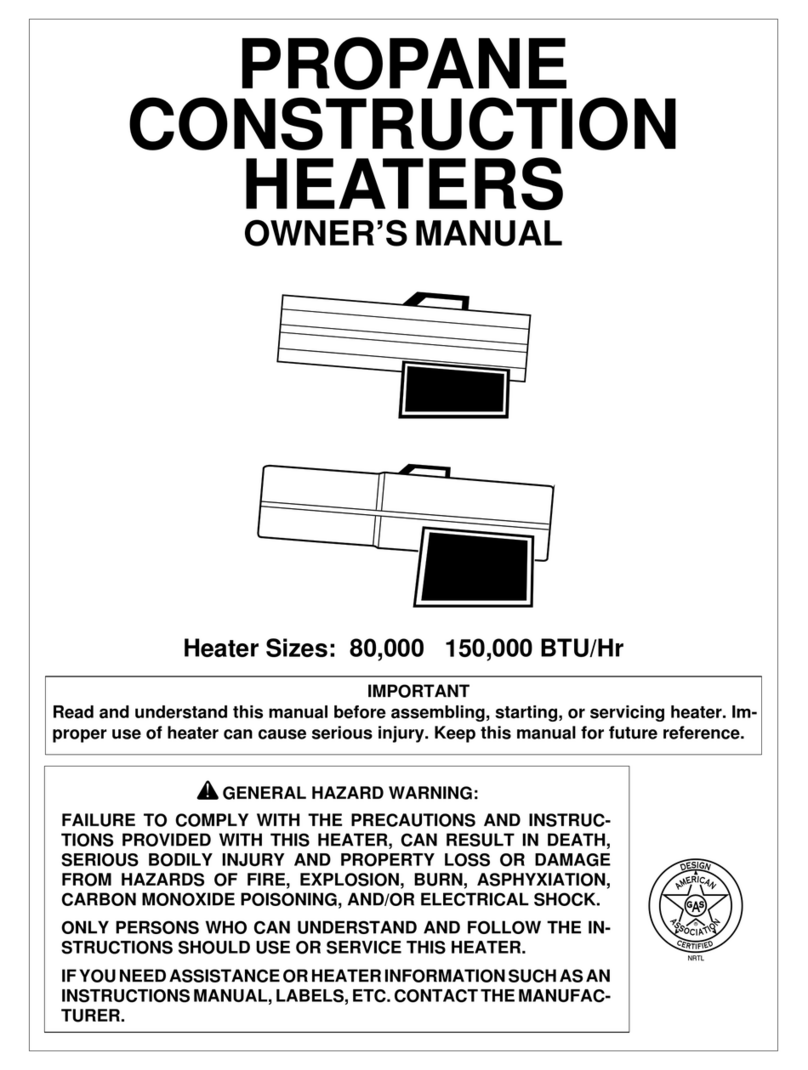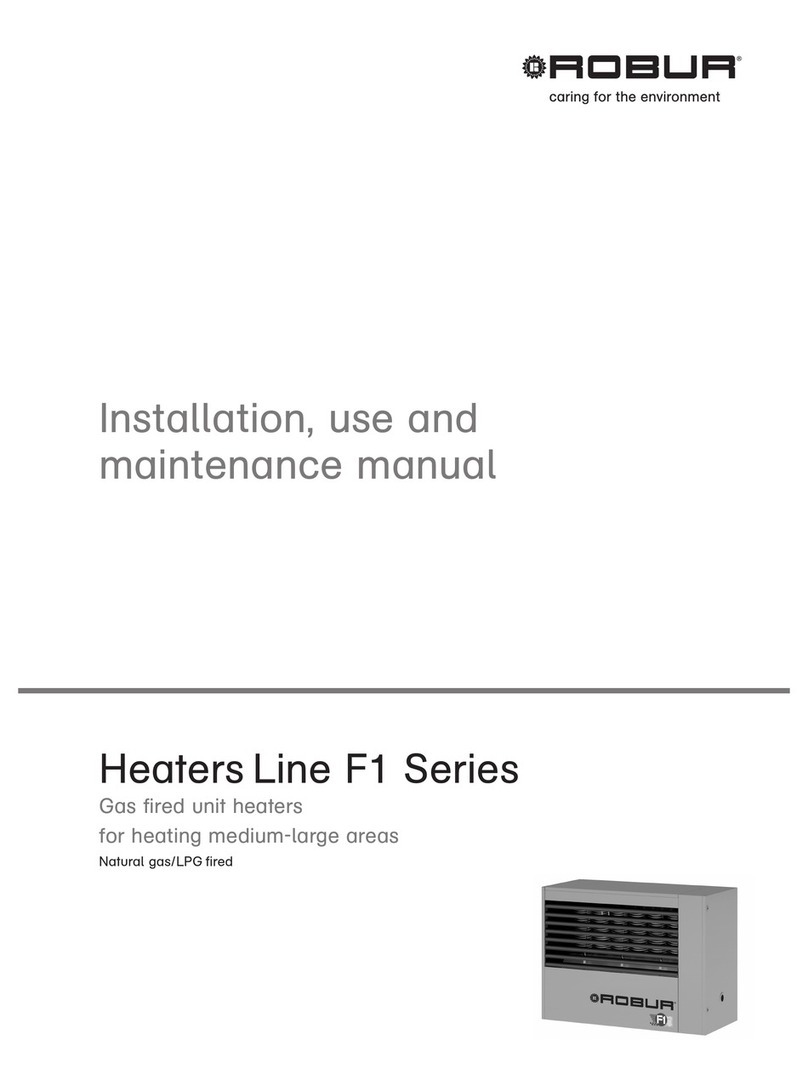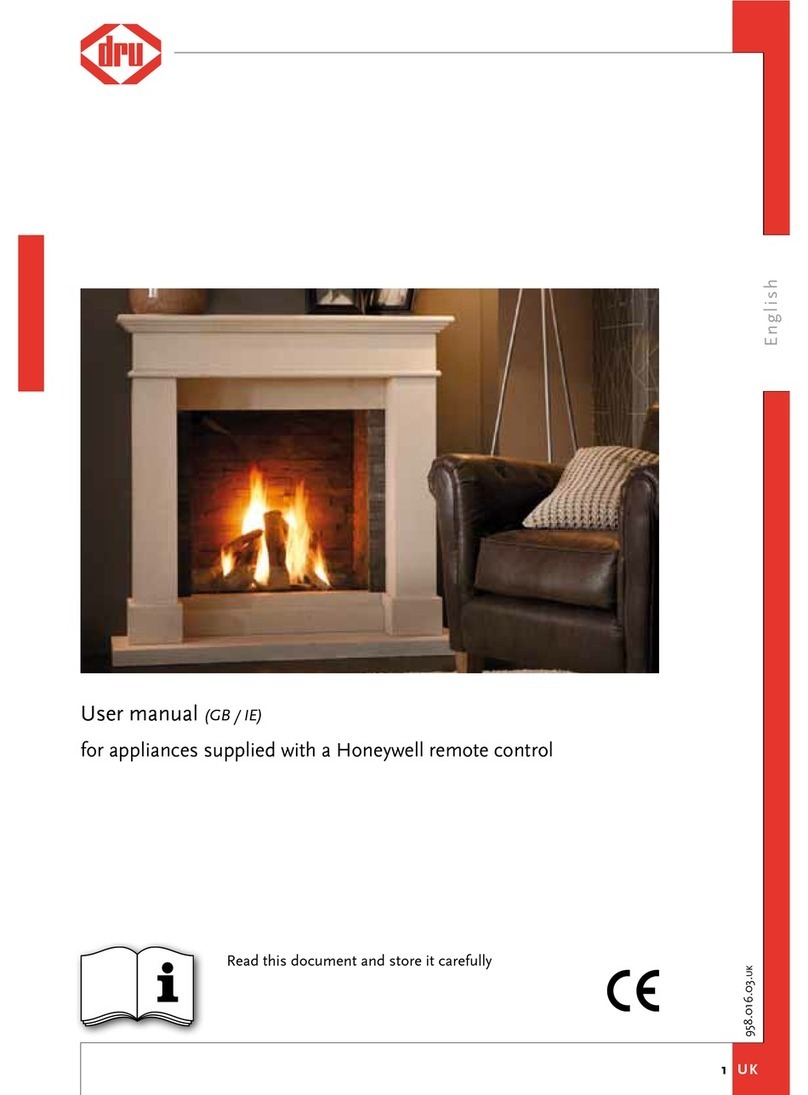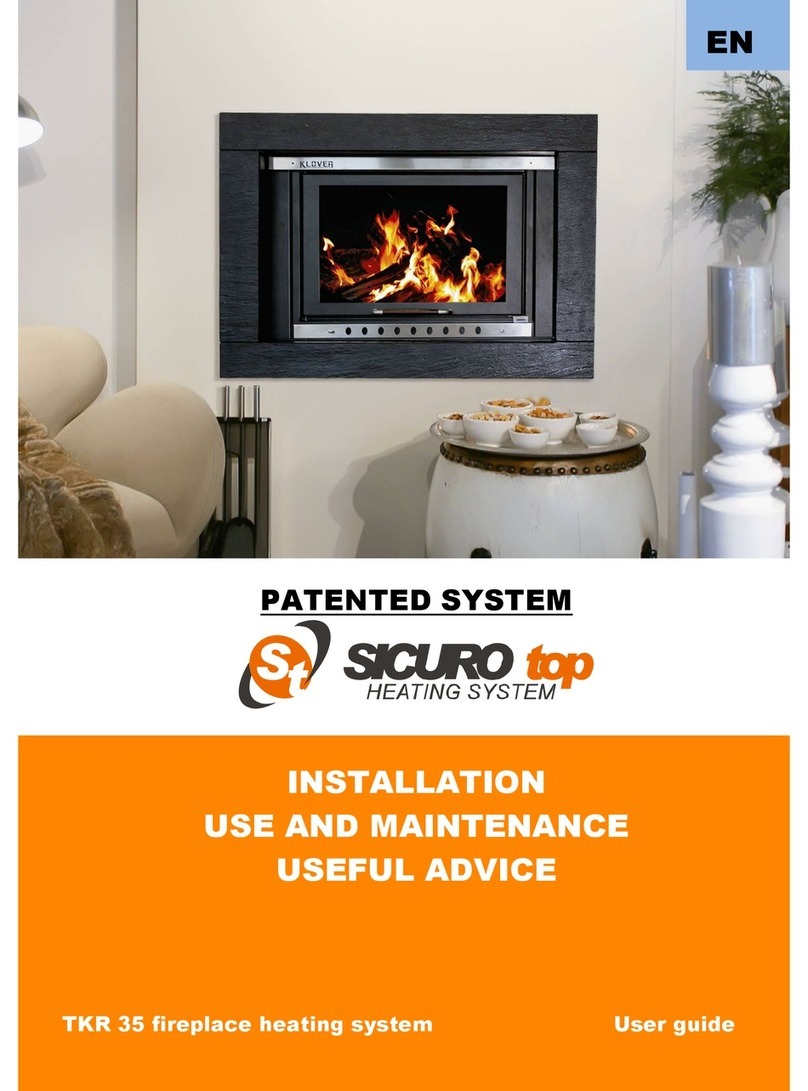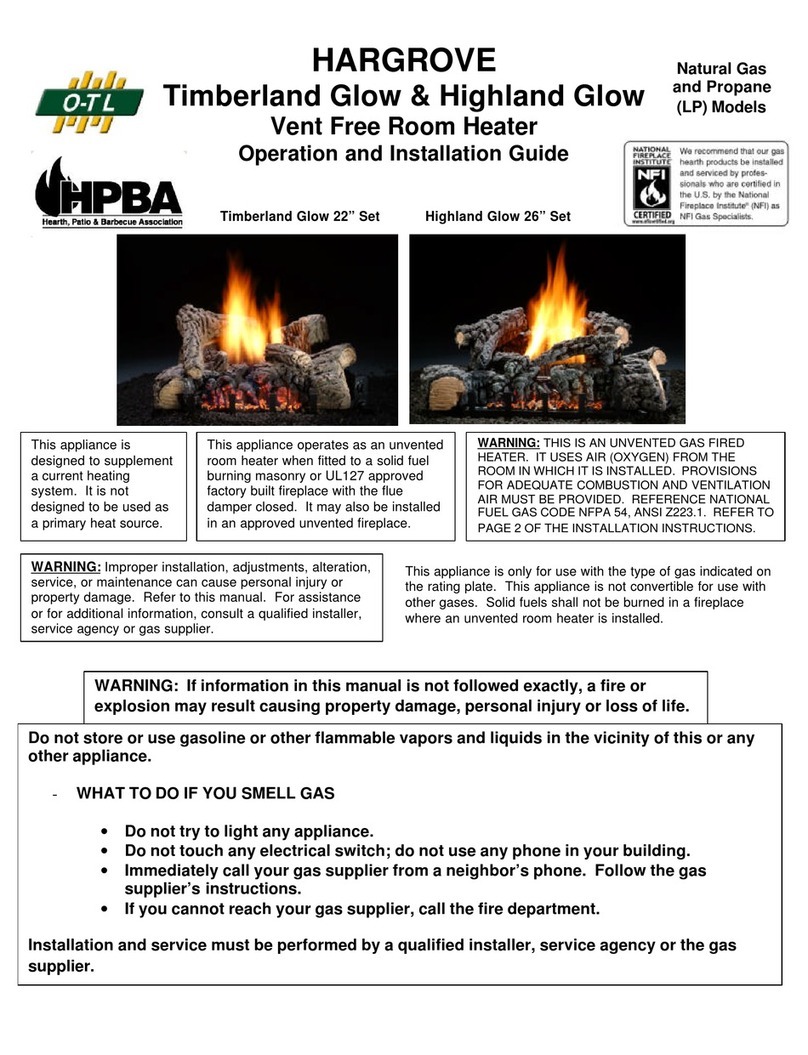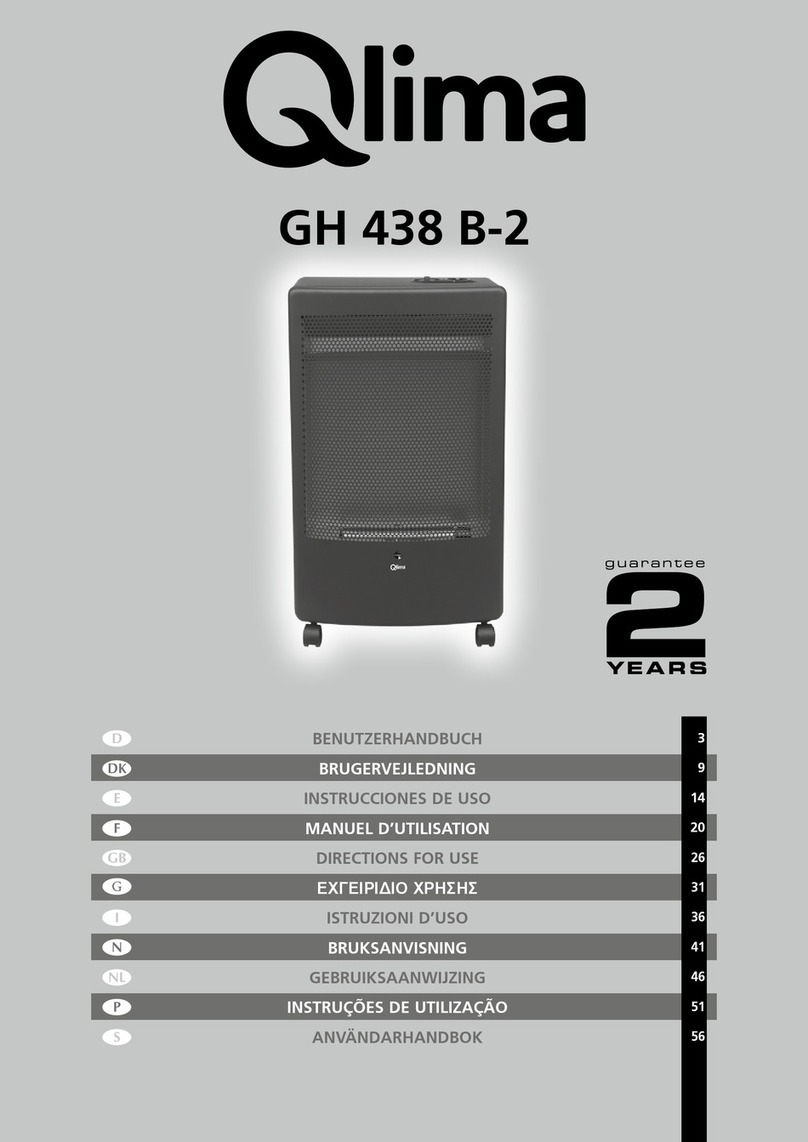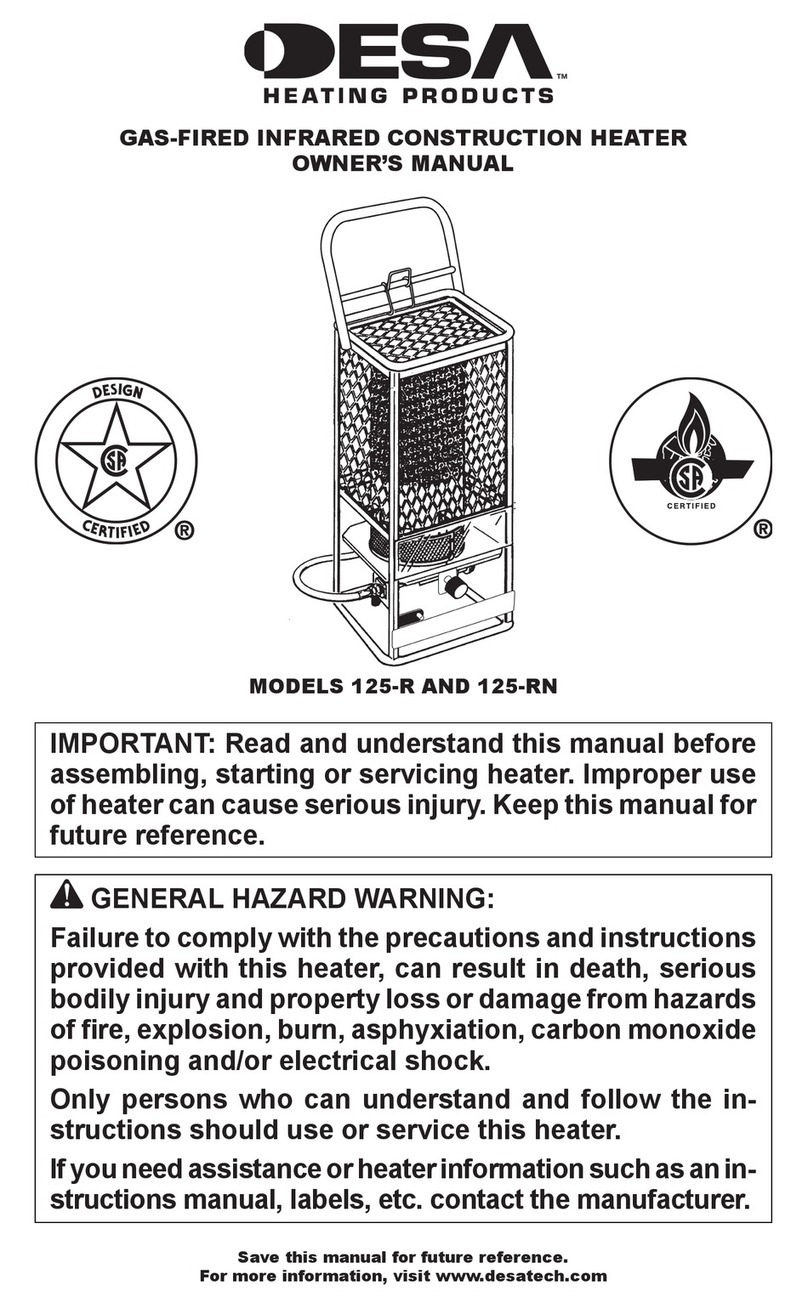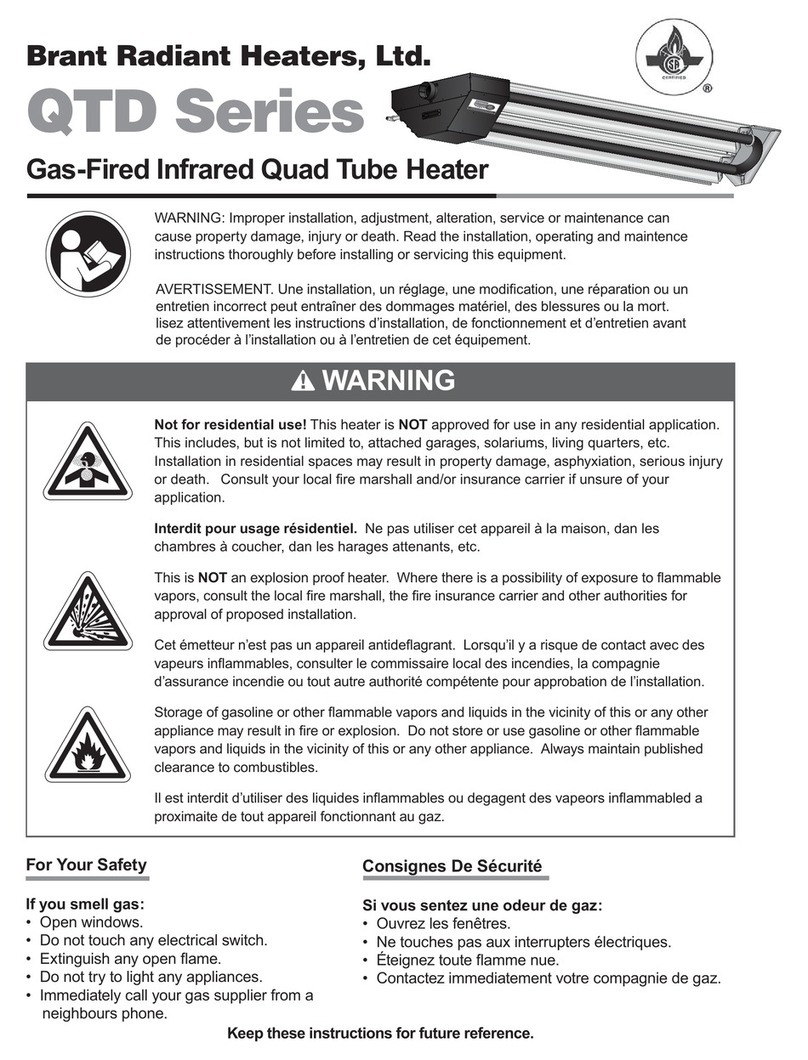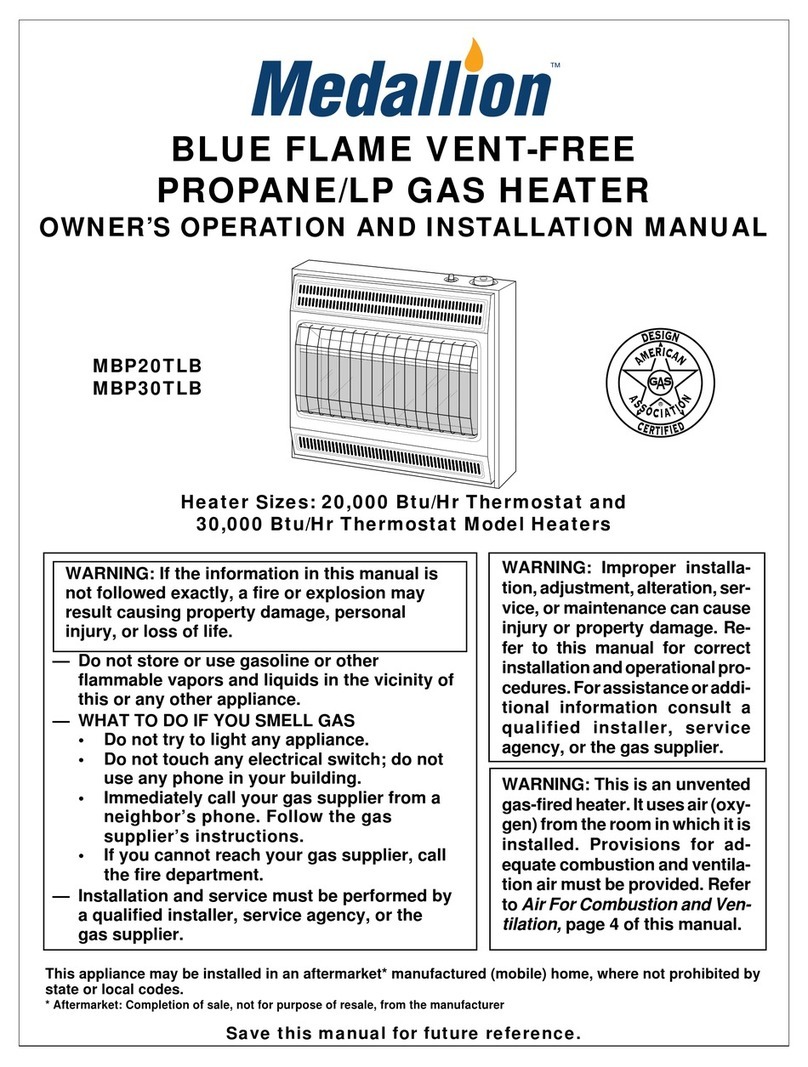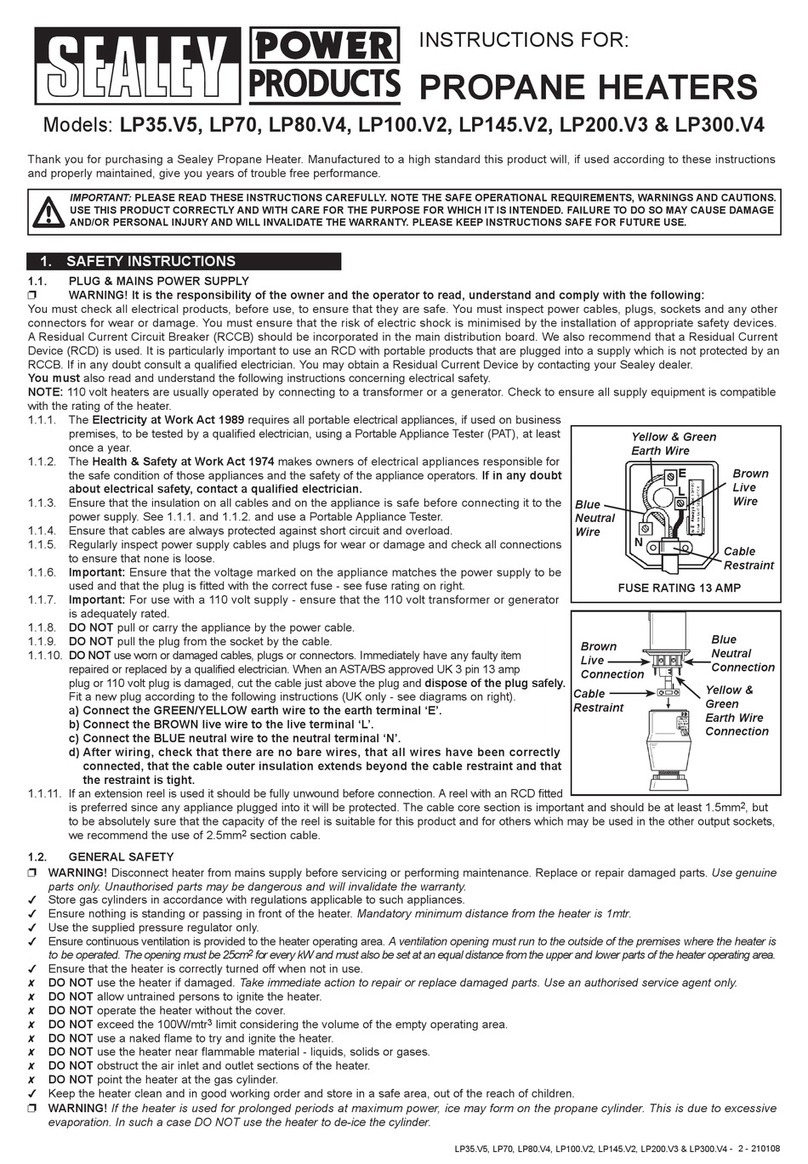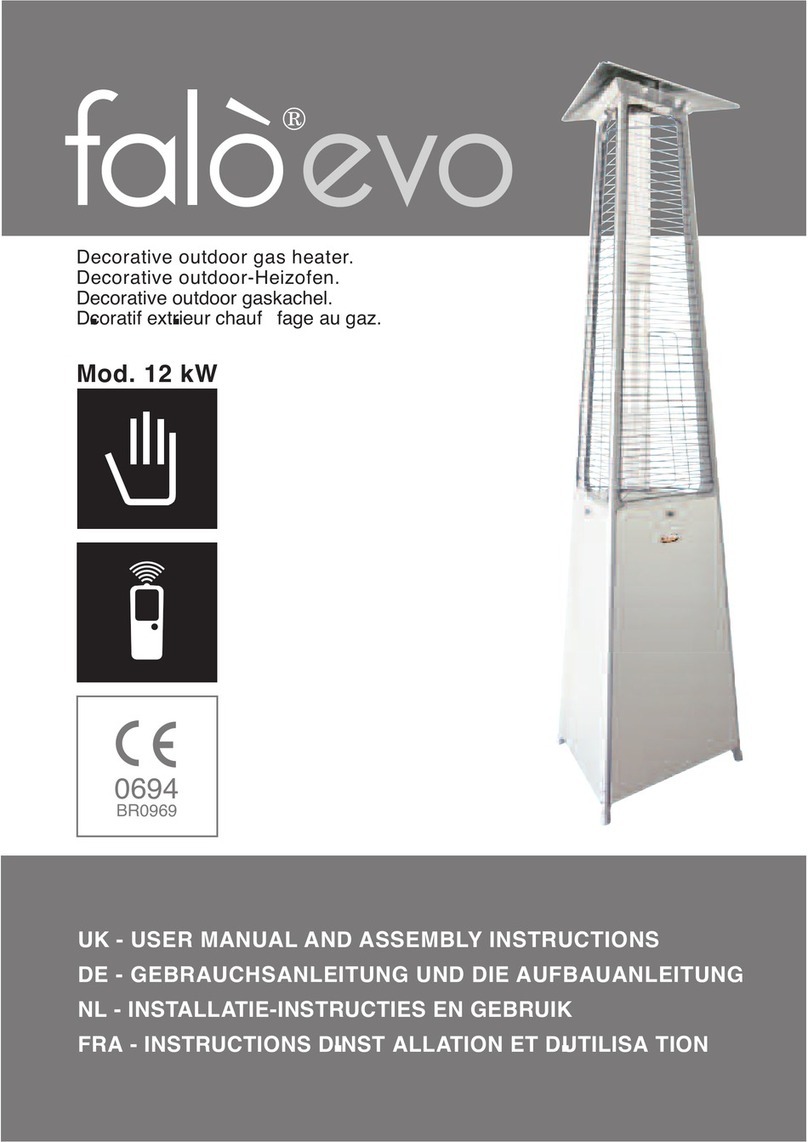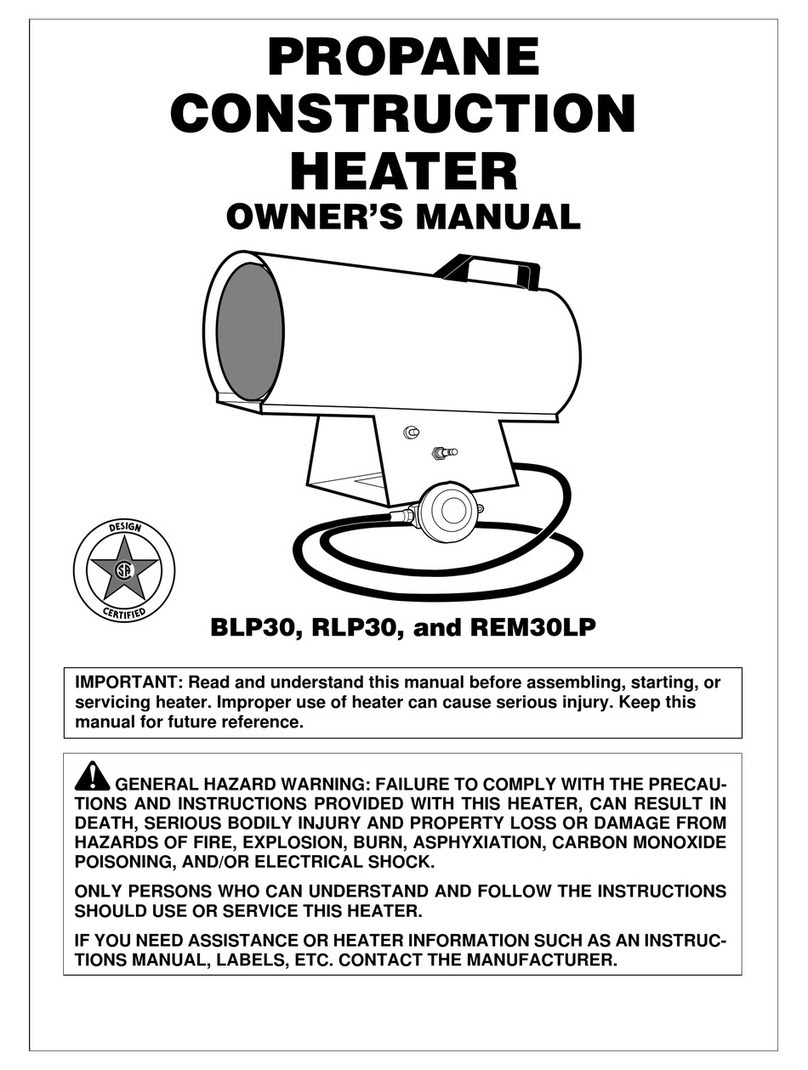9
INSTALLATION INSTRUCTIONS
COALS MUST NOT BE USED
The appliances are suitable for installation in a living room
fireplace or can be supplied as a freestanding unit for fitting
in the kitchen where they will provide full central heating
and domestic hot water for a wide range of properties. The
output or burning rate is regulated by a thermostatically
controlled air damper which modulates between open and
closed to maintain the selected water temperature.
The room heater can be connected to any normal type of
heating and indirect hot water system but as they are
continuously burning appliances it is essential that the
domestic hot water is arranged for gravity circulation.
SPECIFICATION
The boiler is designed to BS.3378 and is constructed from
electrically welded steel plate suitably braced for a system-
working head of 15.8m (52 ft.) max.
Four 1” B.S.P. sockets are provided for connecting the
heating and hot water circuits, two on each side of the
boiler, and a deep top flue socket is provided for a 125mm
(5”) dia. flue-pipe connection.
The appliance has a one-piece mild steel door with a
special rope gasket for sealing both charging throat and
ash-pit areas. The back surround provided is finished in
heat resisting black paint.
The grate comprises individual reciprocating chrome iron
bars and de-ashing can be carried out with the door closed
using the multi-purpose tool provided.
INSTALLATION
General
Before installing the appliance these instructions should be
carefully read and complied with. The installer must also be
satisfied that the appropriate sections of the following
Standards; Codes of Practice and Regulations are
observed: -
British Standards BS EN 14336:2004: Heating
Systems in Buildings. Installation and commissioning
of water based heating systems.
BS EN 12828: 2003; Heating Systems in Buildings.
Design of water based heating systems.
BS EN 12831: 2003; Heating Systems in Buildings.
Method for calculation of the design heat load. As
applicable to the appliance.
BS EN 15287-1 :2007 –Design installation and
commissioning of chimneys.
The Building regulations.
Local Authority Bye Laws.
Local Water Authority Bye Laws.
The installer should be aware of his responsibility under the
Health and safety at Work Act 1974 and provide
appropriate protection for persons carrying out the
installation work, particularly with regard to protection and
caustic effect of fire cement and asbestos dust in existing
installations.
CENTRAL HEATING SYSTEM
The Burrington boiler stove is only suitable for open
vented system.
The central heating system may be either pumped small
bore or gravity circulation employing radiators, skirting
heating, blown convectors or any other suitable heat
emitters. It is essential, however, that the domestic hot
water circuit and bathroom radiator are arranged for gravity
circulation as indicated under “Domestic Hot Water
System” A drain-cock should be fitted at the lowest point of
the system and a safety-valve incorporated in the pipe-
work adjacent to the boiler flow.
Where it is not possible to fit a heat leak radiator in the
gravity circuit as might be the case when installing in flats
and bungalows, it is recommended that a high limit
thermostat is fitted to the flow pipe to bring on the heating
pump in the event of excess water temperature.
As the direct heat emission from the appliance has been
kept to a minimum it may be necessary to fit a radiator in
the same room as the appliance to provide an adequate
standard of heating. The room heating outputs and
radiators areas are listed under “Technical Data”
Electrical connections
The installation of any electrical services during the
installation of this boiler and the associated heating system
must be carried out by a registered competent electrician
and in accordance with the requirements of the latest issue
of BS 7671.
CO Alarms
Building regulations require that whenever a new or
replacement fixed solid fuel or wood biomass appliance is
installed in a dwelling a carbon monoxide alarm must be
fitted in the same room as the appliance. Further guidance
on the installation of the carbon monoxide alarm is
available in BS EN 50292 :2002 and from the alarm
manufacturer’s instructions. Provision of an alarm must
not be considered a substitute for either installing the
appliance correctly or ensuring regular servicing and
maintenance of the appliance and chimney system
